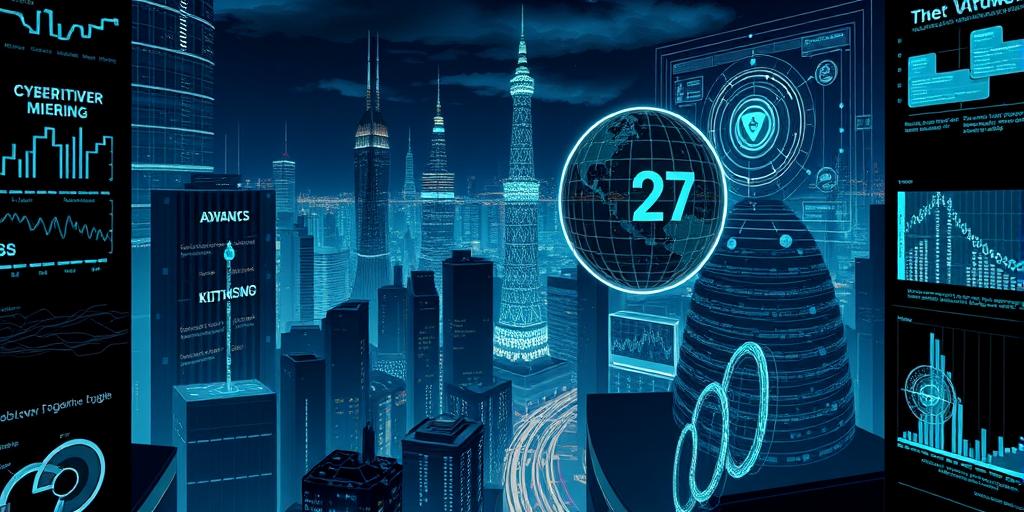How Cybersecurity Professionals Are Protecting Our Digital Future
In today’s hyper-connected world, cybersecurity is no longer a luxury—it’s a necessity. From everyday internet browsing to managing critical infrastructure, our digital lives depend on the tireless efforts of cybersecurity professionals. But what exactly are they doing to protect our digital future? This isn’t just about stopping the next big ransomware attack; it’s a multifaceted battle against an ever-evolving landscape of threats, requiring constant innovation and adaptation. Let’s dive into the strategies and technologies that are shaping the future of online safety.
The Ever-Evolving Threat Landscape
The digital threat landscape is more complex than ever before. We’re not just talking about individual hackers anymore; sophisticated state-sponsored attacks, organized crime syndicates, and even AI-powered malware pose significant challenges. This requires a multi-layered defense strategy, incorporating various technological and human components.
Advanced Persistent Threats (APTs):
Advanced Persistent Threats (APTs) represent a significant challenge for cybersecurity professionals. These sophisticated attacks can remain undetected within a system for extended periods, quietly exfiltrating data before being discovered. Detection often involves advanced threat intelligence gathering, behavioral analysis, and proactive security measures.
Ransomware Attacks and Data Breaches:
Ransomware attacks remain a major concern, with attackers encrypting critical data and demanding payment for its release. Protecting against these attacks requires a comprehensive strategy including robust data backups, employee security awareness training, and advanced endpoint detection and response systems. Data breaches resulting from weak security practices, such as phishing attacks, remain a constant threat, highlighting the critical role of ongoing security awareness education.
AI-Powered Malware:
The use of artificial intelligence in malware development has added another layer of complexity to cybersecurity. AI-powered malware can adapt to security measures, making it difficult to detect and remove. This requires proactive threat intelligence, machine learning-based security solutions, and continuous adaptation of security protocols to counter the ever-changing threats.
Cutting-Edge Cybersecurity Defenses
Cybersecurity professionals are employing innovative strategies and technologies to combat the evolving threats. These include advanced threat detection and prevention systems, behavioral analytics, and robust incident response plans. The goal is not just to stop attacks but to anticipate them.
Behavioral Analytics and Threat Intelligence:
Understanding the behaviors of cybercriminals is crucial. Behavioral analytics help identify anomalies and potential threats by monitoring system activities, user patterns, and network traffic. Threat intelligence, often gathered through collaborations and information sharing networks, plays a critical role in anticipating emerging threats and proactively strengthening defenses. Threat hunting, a proactive approach to security, is becoming increasingly prevalent.
Advanced Endpoint Detection and Response (EDR):
EDR solutions monitor endpoints (computers, mobile devices, etc.) for malicious activity. They use advanced techniques to detect even subtle signs of compromise, providing real-time alerts and facilitating rapid responses to security incidents. This level of granular monitoring enables faster containment and mitigation of threats.
Security Information and Event Management (SIEM):
SIEM systems gather and analyze security logs from various sources, providing a comprehensive view of security events across an organization’s infrastructure. This allows security teams to quickly identify and respond to security incidents, improving overall security posture. Real-time monitoring, automated alerts, and correlation of events are all key features of effective SIEM systems.
The Human Element in Cybersecurity
While technology is crucial, the human element remains a critical factor in cybersecurity. The effectiveness of any system depends on the vigilance and training of individuals within an organization. Phishing attacks, social engineering, and insider threats continue to pose major risks.
Security Awareness Training:
Employee security awareness training is paramount. Educating employees on the latest threats, such as phishing attempts and social engineering tactics, enables them to identify and avoid potential security risks. Regular training and awareness programs are crucial for maintaining a strong security posture, as is instilling a strong security culture within the organization.
Incident Response Planning:
Having a well-defined incident response plan is critical. A proactive approach to incident management enables quick reaction and mitigation efforts should a breach occur. This involves establishing clear communication channels, pre-defined procedures, and a dedicated incident response team. Regular testing and updates to the plan are essential to ensure preparedness.
Ethical Hacking and Penetration Testing:
Ethical hacking and penetration testing are crucial for identifying vulnerabilities within an organization’s systems before malicious actors can exploit them. This process simulates real-world attacks to pinpoint security weaknesses and guide remediation efforts. Regular penetration tests allow organizations to stay ahead of potential threats.
The Future of Cybersecurity
The future of cybersecurity is bright, but it requires constant vigilance and innovation. Emerging technologies, such as AI and blockchain, offer opportunities to enhance security, but they also introduce new challenges. The ongoing collaboration between cybersecurity professionals, researchers, and organizations is essential to protect our digital future. Continuous learning, adaptation, and collaboration are key to staying ahead of the curve. The next generation of security professionals will need diverse skill sets and a commitment to lifelong learning in this ever-evolving field.
Ready to take your cybersecurity to the next level? Learn more about advanced security solutions today!













